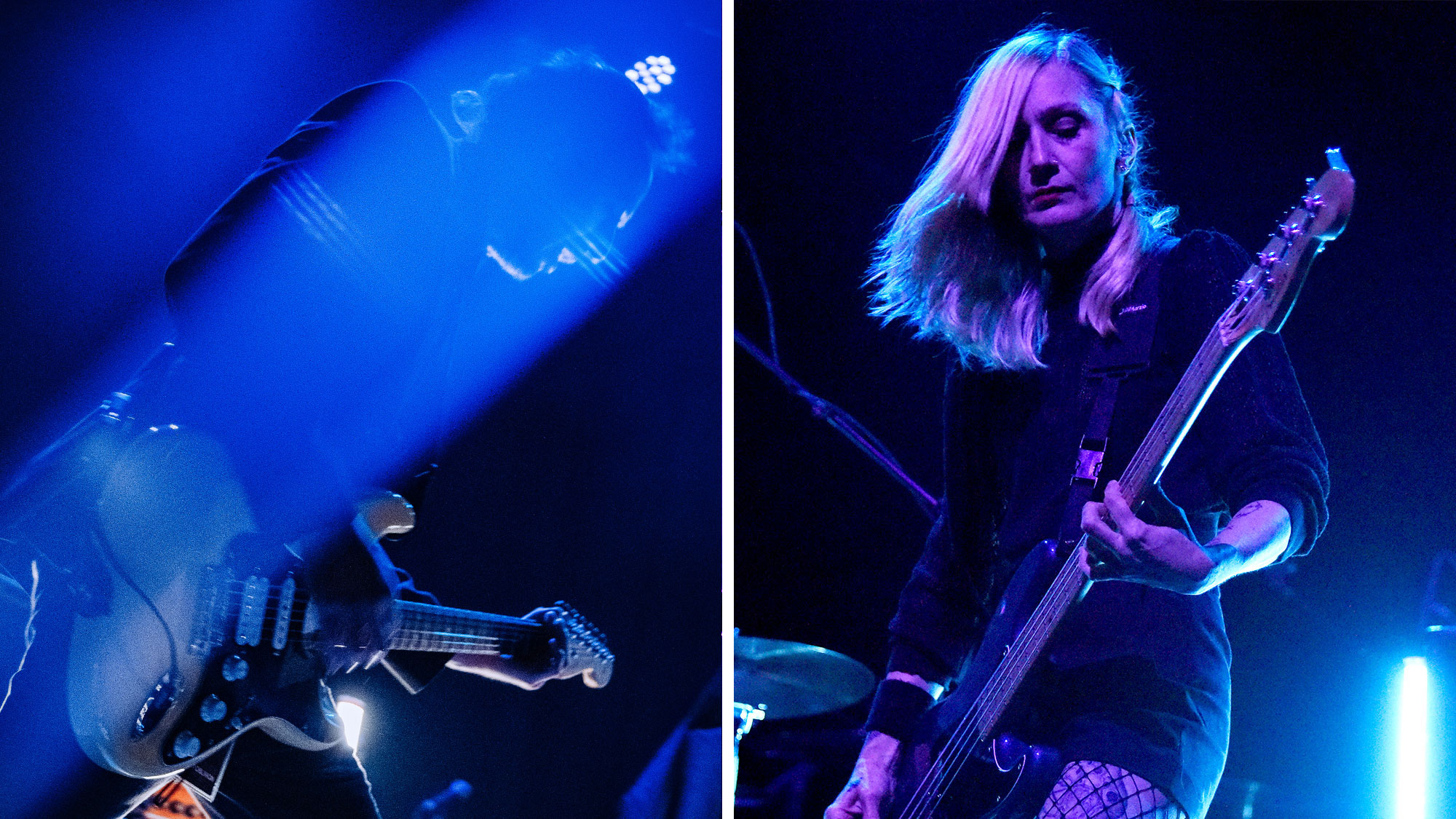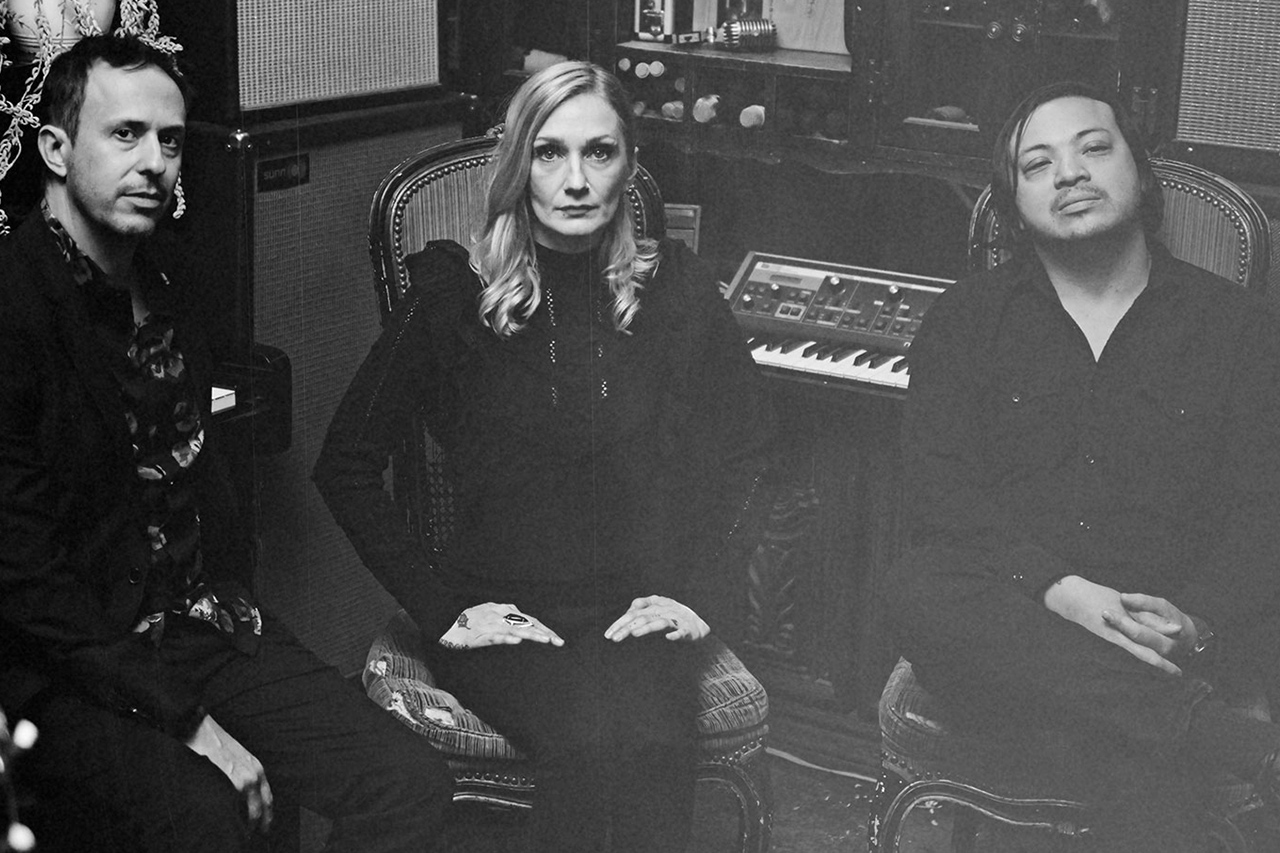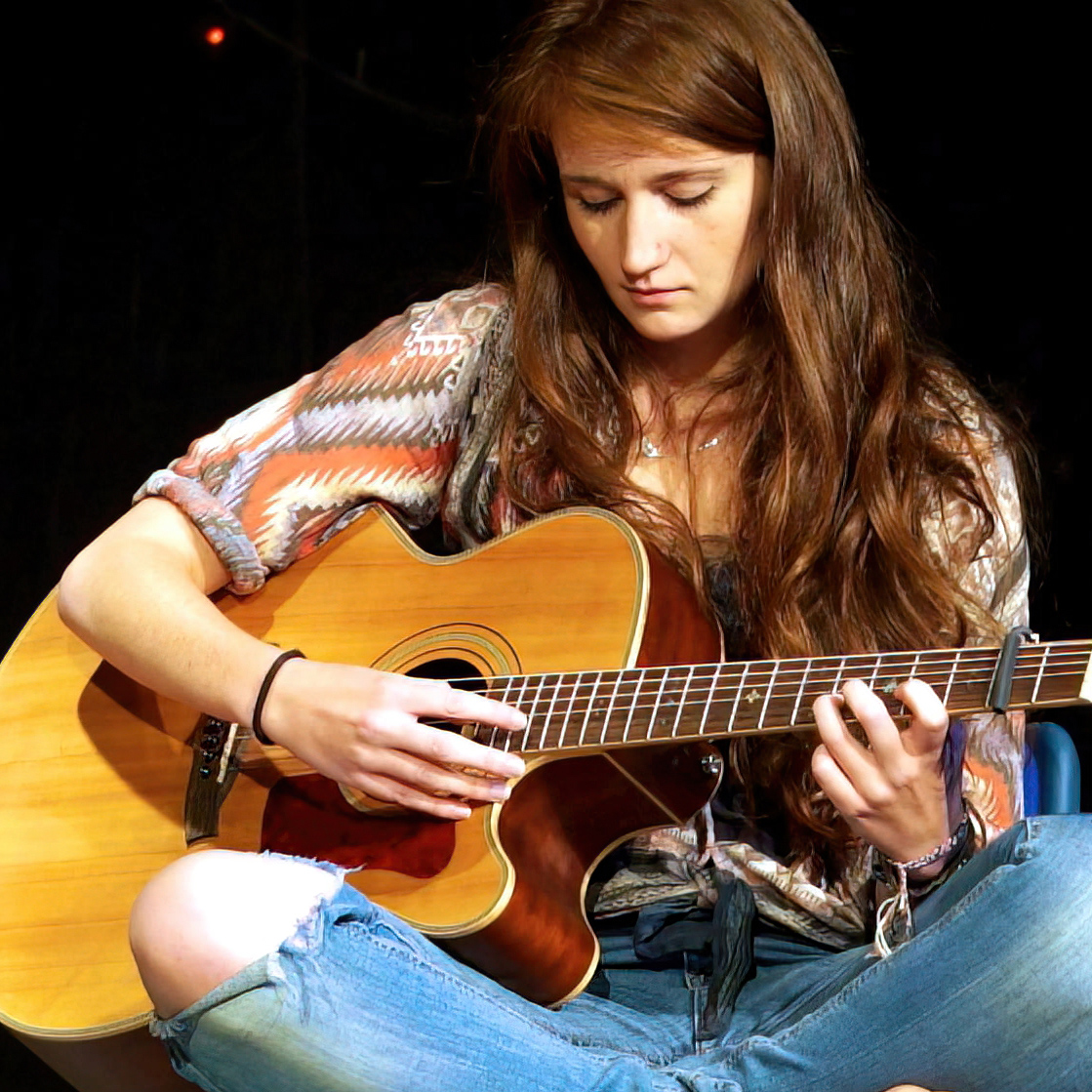“People are always surprised that I’m playing a P-Bass and he’s playing a Stratocaster – it’s crazy just how heavy they can be”: Meet husband-and-wife guitar team Spotlights, the dreamsludge tonesmiths championed by Mike Patton
Dreamsludge, doomgaze, doomsludge… Whatever you call them, Mario and Sarah Quintero are producing some of the heaviest tones in the business. They reveal how they do it – and why couples who riff together, stay together

As the old saying almost goes: couples who riff together stick together. That’s certainly the case for Pennsylvania-based husband-and-wife duo Mario and Sarah Quintero, whose shared love of drop tunings, fuzz and atmospheric songcraft has made Spotlights a standout proposition in the heavy music space for around a decade.
Spotlights are signed to Ipecac, record label of Faith No More icon Mike Patton, and in June, they’re embarking on their first-ever UK headline tour, before hitting Europe for a string of dates in support of labelmates Mr. Bungle and Oxbow. The shows come a year after the release of their fourth album, Alchemy For The Dead.
The pair started making working together as Spotlights in 2013, but their paths first crossed several years earlier, when Mario was working as a studio engineer in San Diego and Sarah came in to record with another band. They connected almost instantly.
“Sarah has a touch on the bass that a lot of people can’t find,” says Mario, speaking from their home in Pittsburgh. “It’s a very ballooned-out sound – very bottom-heavy, subby and open – and it’s not very busy.
“I don’t care too much about how many notes someone can play. It’s about how it sounds when you play it, and Sarah’s feel has alway been very smooth, slow and heavy.”
“When I met Mario, he was a recording engineer and he just let me be me as a musician,” Sarah recalls. “He paid attention to me and listened to me, whereas my experiences in the past of being in studios were that that did not happen.
“Not only was I the bass player, but I’m female – so other engineers were always like, ‘Yeah, yeah, we’ll get to you whenever!’”
All the latest guitar news, interviews, lessons, reviews, deals and more, direct to your inbox!
Four albums, several EPs and countless hours of stage time later, the Quinteros have perfected an intense signature sound that artfully pits extremes against each other. In any given recording, you’ll find darkness doing battle with light, beauty taking on brutality and tension vying for supremacy over catharsis.
Sarah says such dualities have always been central to their approach. “When Spotlights started, it was just the two of us,” she explains. “Mario was playing drums, we had backing tracks and just me on bass. Without even really being conscious of it, that’s what the sound came out of.
“We were allowing prettiness to coexist with heaviness. As we evolved, I think we really dialed that in. Now that Mario plays guitar with me, we have this natural push and pull in the songs.”
This distinctive chemistry has invited many creative attempts at genre classification over the years – the most satisfyingly evocative of which include ‘dreamsludge,’ ‘doomgaze’ and ‘doomsludge.’ Mario’s favorite descriptor for the music is ‘an atmospheric bludgeoning,’ while Sarah prefers ‘really heavy rock music.’
I really love the EarthQuaker Hoof Reaper and the fact that they put those two together on one pedal
Sarah Quintero
But no matter how you cut it, Spotlights are responsible for some of the most arresting tones in the business. Equipped with a Mexican Fender Standard Precision and an “arsenal of pedals,” Sarah is in charge of low-end devastation, while Mario juggles guitar duties with additional synth triggers and samples.
Both contribute vocals, and the lineup is completed by Chris Enriquez on drums. The straightforward trio configuration somewhat belies the enormity of their sound – and that’s where things get really interesting from a tone-building perspective.

While many bands layer up endless guitar and bass tracks in the studio to give the impression of an impenetrably thick wall of sound, Mario explains: “We don’t tend to over-layer a lot of guitars together. Usually, if you look at the sessions, it’s just two guitars panned to either side and then one bass track. It’s kind of a cliché, but I find that less is more.
“That tends to work out because, instead of getting muddy and clouded with too many layers of guitars and too many things on top of each other, you can actually take those simpler signals and just make them bigger. Then we layer all kinds of pedals on top of each other to get whatever sound we want.”
For Sarah, that typically means cranking her all-time favorite weapons of bass destruction: the EarthQuaker Devices Monarch Overdrive and the Way Huge Swollen Pickle Jumbo Fuzz.
When asked what her hypothetical dream pedal might be, the answer that springs to mind most readily is a Monarch-Pickle hybrid that would enable parallel blending of both effects in one unit.
“I really love the EarthQuaker Hoof Reaper and the fact that they put those two together on one pedal,” she says, having utilized this doubled-up fuzz during the recording of Alchemy For The Dead.
“But a lot of distortion pedals that are blended have octaves and weird signals thrown in and I don’t really love that stuff.
“I love the solidness of a pedal doing what it needs to do. So if I could blend the Monarch and the Swollen Pickle into one, that would be awesome!”
Elsewhere in her collection, you’ll find Z.Vex’s Woolly Mammoth and Fat Fuzz Factory pedals as well as EarthQuaker’s Tone Job EQ & Boost, Astral Destiny Octave Reverb and Aqueduct Vibrato.

“It’s nice to have an arsenal of pedals to dig through and find what I need,” she explains. “It changes with every record. Some are all Z.Vex pedals, some records are all EarthQuaker, or a combination of both. Once I hear what I need in my head, I just search it out in my collection.”
Mario, on the other hand, is more of a recovering pedal addict and he’s recently converted to using a Line 6 Helix. “That thing changed my whole world,” he enthuses.
Fortunately and unfortunately, the Helix is now my whole motherboard. If it goes down then it’s going to be tough to recover!
Mario Quintero
“When I first started playing guitar in Spotlights, I had two pedalboards – kind of like Sarah – with a ton of effects and a ton of different distortions, delays, reverbs and tremolos.
“So there was tons of tap dancing, and on top of that, I had a MIDI controller that I was triggering samples from. It had to go to an interface with Ableton, so there were way too many things set up and too many variables that could go wrong.”
Like many, Mario was initially hesitant to make the switch to modeling technology. With Sarah’s help he only did so after rigorously A/B testing all of his old pedals against the Helix’s equivalents.
“So, fortunately and unfortunately, the Helix is now my whole motherboard,” he says. “If it goes down then it’s going to be tough to recover! Luckily, they’re built really well and I haven’t had any issues.”
As for guitars, Mario chops and changes between a favorite old Dunable Cyclops, which he describes as “a little tank,” and a more recently acquired HSH Stratocaster, which he’s fitted with a Seymour Duncan humbucker in the bridge position for added red-hot attack, particularly in live performance settings.
“People are always surprised that I’m playing a P-Bass and he’s playing a Stratocaster,” says Sarah, conscious that their instruments of choice look far more mainstream than they sound when slung into drop B and given the Spotlights treatment.
But, as Mario points out, “It’s crazy just how heavy they can be!”
- Alchemy For The Dead is out now. Spotlights tour the UK and Europe throughout June 2024.
Since graduating university with a degree in English, Ellie has spent the last decade working in a variety of media, marketing and live events roles. As well as being a regular contributor to GuitarWorld.com, she currently heads up the marketing team of a mid-scale venue in the south-west of England. She started dabbling with guitars around the age of seven and has been borderline obsessed ever since. She has a particular fascination with alternate tunings, is forever hunting for the perfect slide for the smaller-handed guitarist, and derives a sadistic pleasure from bothering her drummer mates with a preference for wonky time signatures.




